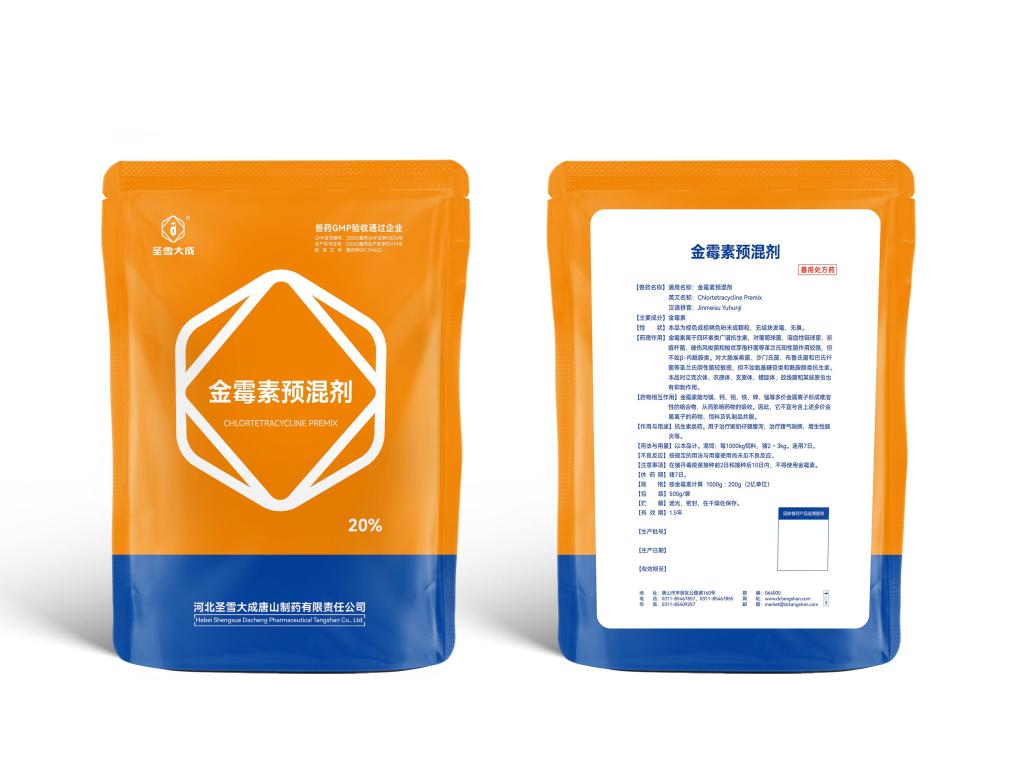Tel:+8618231198596

News
 CONTACT
CONTACT
 CONTACT
CONTACT
- Linkman:Linda Yao
- Tel: +8618231198596
- Email:linda.yao@dcpharma.cn
- Linkman:CHARLES.WANG
- Department:Overseas
- Tel: 0086 0311-85537378 0086 0311-85539701
News
Optimizing Chlortetracycline Premix dosages for efficacy.
TIME:2024-05-29
Factors Influencing CTC Premix Dosages:
Target Pathogens:
The choice of CTC premix dosage depends on the susceptibility of target pathogens and the desired level of antimicrobial activity. Different bacterial species exhibit varying degrees of susceptibility to CTC, necessitating dose adjustments based on the spectrum of activity and minimum inhibitory concentration (MIC) values. For example, Gram-negative bacteria may require higher CTC concentrations due to differences in cell wall structure and efflux pump mechanisms. Additionally, consideration should be given to emerging pathogens and antimicrobial resistance trends when determining optimal dosages of CTC premix.
Animal Species and Health Status:
The dosage of CTC premix may vary depending on the species, age, weight, and health status of the animals being treated. Young animals and those with compromised immune systems may require higher dosages to achieve therapeutic effects, whereas adult animals may respond adequately to lower doses. Furthermore, factors such as feed intake, metabolism, and excretion rates can influence the pharmacokinetics of CTC in different animal species, necessitating species-specific dosing guidelines.
Dosage Regimens:
Optimizing dosage regimens involves selecting the appropriate concentration of CTC premix in feed or water, as well as the duration and frequency of administration. Continuous administration of subtherapeutic doses of CTC premix, known as subtherapeutic or growth promotion dosing, is commonly used to control bacterial infections and promote growth in livestock. However, intermittent dosing regimens, such as pulse dosing or metaphylactic dosing, may be preferred in certain situations to minimize the risk of antimicrobial resistance and preserve the efficacy of CTC premix.
Withdrawal Periods:
Withdrawal periods refer to the interval between the last administration of CTC premix and the harvesting or slaughter of animals for human consumption. Withdrawal periods are determined based on the pharmacokinetics of CTC, tissue depletion kinetics, and regulatory guidelines to ensure that drug residues in animal products comply with maximum residue limits (MRLs) established by regulatory agencies. Adherence to withdrawal periods is critical for preventing violative residues in meat, milk, eggs, and other animal-derived products and maintaining food safety standards.
Optimization Strategies for CTC Premix Dosages:
Veterinary Oversight:
Consultation with a veterinarian is essential for determining appropriate dosages of CTC premix based on the specific needs and conditions of the livestock operation. Veterinarians can conduct diagnostic tests, assess disease prevalence, and develop customized treatment plans to optimize CTC dosing regimens and minimize the risk of antimicrobial resistance.
Dose Titration:
Dose titration involves adjusting CTC premix dosages based on clinical response, microbiological outcomes, and feedback from farm management. By monitoring treatment efficacy and disease recurrence, producers can fine-tune CTC dosing regimens to achieve optimal therapeutic outcomes while minimizing the use of antimicrobials.
Surveillance and Monitoring:
Regular surveillance of antimicrobial resistance patterns, disease prevalence, and treatment outcomes is essential for evaluating the effectiveness of CTC premix dosing regimens and identifying emerging issues. By monitoring antimicrobial use practices and resistance trends, producers can make informed decisions about optimizing CTC dosages and implementing targeted interventions to mitigate the spread of antimicrobial resistance.
Adherence to Best Management Practices:
Adherence to best management practices, including proper hygiene, biosecurity measures, and vaccination programs, is essential for reducing the reliance on antimicrobials and maintaining animal health in livestock production. By implementing preventive measures and minimizing disease risk factors, producers can reduce the need for CTC premix dosing and promote sustainable production practices.
Conclusion:
Optimizing Chlortetracycline (CTC) premix dosages is essential for achieving therapeutic efficacy, minimizing antimicrobial resistance, and ensuring the sustainable use of antimicrobials in livestock production. By considering factors such as target pathogens, animal species, dosage regimens, and withdrawal periods, producers and veterinarians can develop customized treatment plans to maximize the benefits of CTC premix while minimizing the risks associated with antimicrobial use. Through veterinary oversight, dose titration, surveillance, and adherence to best management practices, the effective and responsible use of CTC premix can contribute to improved animal health, production efficiency, and public health outcomes in livestock production.
- Tel:+8618231198596
- Whatsapp:18231198596
- Chat With Skype







